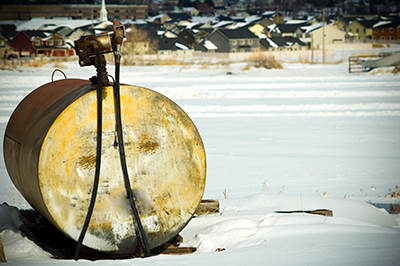Happy Holidays from PVC! I wish you and your family all the best the holiday season has to offer and warm wishes for a prosperous New Year.
As 2012 draws to a close, I want to share three important themes that seemed prominent throughout the course of the year. I hope they will help guide your business in 2013.
1. Using an escrow to get the deal done
2. The pros and cons of SBA deals with high-risk collateral
3. AULs…Don’t forget to maintain them!

Using an escrow to get the deal done
In the not too distant past, an environmental issue requiring remediation would often spell the end of a deal, especially if it required bank financing. As the industry has evolved, so has lenders’ understanding of issues involving contamination and their risk tolerance. To that end, I’ve noticed an abundance of contaminated properties being transferred this year — and lent upon — with outstanding environmental issues.
The first ingredient in making these deals happen — and sleeping well at night — is making sure that the property owner (or party responsible for the cleanup) has a qualified consultant that fully delineates the source and extent of contamination in soil, groundwater and indoor air (as applicable). Second, the consultant must accurately predict the cost and time frame to take a property to permanent regulatory closure.
Finally, the lender should retain their own Environmental Professional to review the scope and anticipated costs of remediation, and either escrow (for example) 150% of anticipated costs or obtain environmental cap-coverage insurance, until regulatory closure is achieved.

The pros and cons of SBA deals with high-risk collateral
With the consolidation of the petroleum industry in the last 10 years, many redundant services stations were put on the market and purchased by existing operators. The SBA 504 program offers a great opportunity for borrowers to put less money down while providing lenders with less capital exposure.
The catch, however, is that SBA has a pretty exacting environmental policy and requires certain assurances from consultants (e.g. Reliance Letters that some consultants refuse to sign due to liability language). These requirements may not otherwise be needed on a traditional commercial mortgage, and I’ve encountered a number of borrowers who struggle with the decision. More often than not, however, while it may cost the borrower more upfront money in due diligence expense, it seems that the favorable aspects of the SBA program outweigh the negatives. Plus, if the borrower is also purchasing the property — rather than a refinance — it behooves the borrower to be all the more conservative.

AULs…Don’t forget to maintain them!
Most CRE lenders have probably been involved with properties that maintain an Activity and Use Limitation (AUL), which may limit certain future use of the property, unless more extensive remediation is conducted. What’s often lost in translation, however, is some of the more benign requirements of an AUL.
For example, an old industrial property used for many years as a plating facility was remediated. While the lion’s share of soil and groundwater contamination was removed, elevated levels of heavy metals and petroleum were left in soil in order to significantly limit the cleanup costs — once it was determined that the requirements of an AUL would adequately protect human health and the environment. Everyone involved in the transaction understood that certain future uses were prohibited, such as residences, daycare facilities, etc. However, as the contaminated soil was located underneath a paved parking lot, the AUL also required that a suitable barrier (pavement in this instance) be well maintained and inspected annually.
In this example, three years after the AUL was filed, three violations occurred: 1) The pavement was not annually inspected; 2) The pavement became worn and no longer provided an adequate barrier to the contaminated soil; and 3) A contractor hired to plant trees along a walk way was not made aware of the AUL and excavated and improperly disposed of contaminated soil off-site. The DEP subsequently fined the owner and may scrutinize this property in the future.
In short, as a lender, know all the requirements of the AUL and bind your borrower to adhere to them throughout the duration of the loan.
